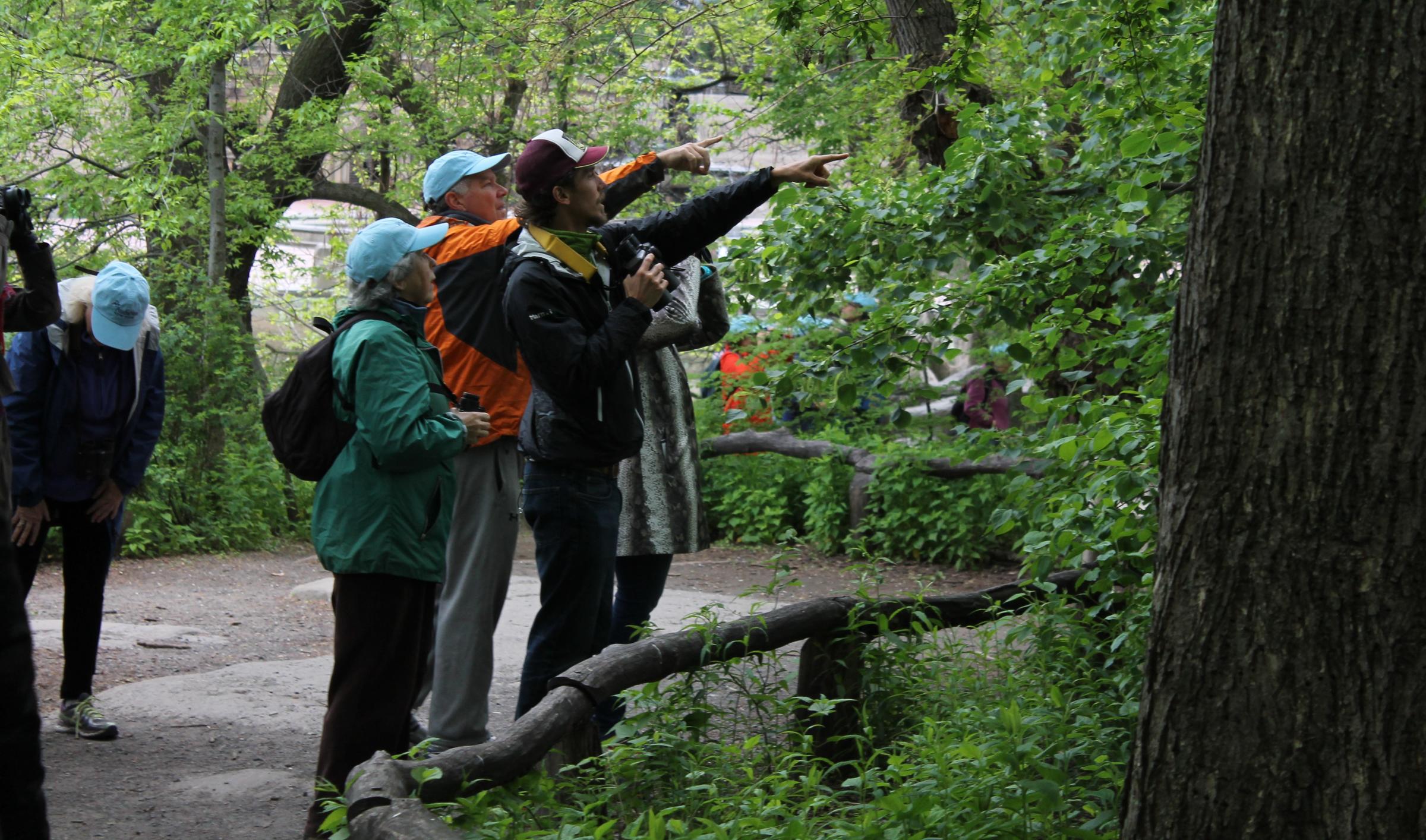Cities can offer some of the easiest and most efficient birding. Many places are quickly reached by public transportation so they are available to everyone, and many city parks are a manageable size, making birding on work breaks and to or from work a regular possibility. Considering the possibilities of birding in your city? Here are a few tips to make it as fun and convenient as possible.
1. Look up! You might see a Peregrine Falcon hunting, an American Kestrel harassing a Red-tailed Hawk, some interesting waders, or even flocks of Chimney Swifts flying overhead.
2. Unless you know the area well, go birding with a friend: Even urban parks have remote areas, and city parks aren’t always safe despite a lot of human activity. Cemeteries and botanical gardens are favorites as they are beautiful, full of birds (especially in the native plants sections of the botanical gardens) and most offer a level of security. If you like birding alone, take safety seriously and consider places that tend to have security for being go-to hotspots. In any case, do your research before leaving your home or office.
3. Check the local bird lists for rarities that are passing through: You might be able to quickly see an unusual bird that is in the area for just a short period of time. These birds can often be readily seen in urban parks, especially during migration. City parks on flyways often play host to migrating birds who need to stop for a break. These patches of green are irresistible to a hungry and tired migrant or vagrant who has been blown off course.
4. Join a local Audubon birdwalk: Taking a guided walk can help you get familiarized with the birding hotspots in the city and get a better sense of the birds you will find. Plus you may discover some new places to visit in your city you hadn’t considered before.
5. Take someone new to birding, especially a young person: Most urban dwellers who are not birders, have no idea how many birds use urban areas and how they live in heavily populated areas. Getting out and showing someone the avian activity during migration, listening to bird calls in the park or even helping someone see his first bird (which isn’t a pigeon or sparrow, that is) can be a life changer. Make a difference in someone’s life by showing them how birds use the city. It’s the best way to get people interested in conservation and that is the best gift you can give your friends and the birds.
Deborah Rivel is an Audubon New York board member and coauthor of Birdwatching in New York City and on Long Island. The book is a complete field guide for birding in the city that never sleeps.





